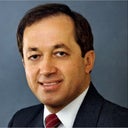Posted underBreast Augmentation q&a
Is there anything i can do to prevent mondors cords prior to getting my breast augmentation?
Answers (13)
From board-certified doctors and trusted medical professionals
Dr. Jeffrey E. Schreiber, MD, FACS

Dr. Jeffrey E. Schreiber, MD, FACS
Board Certified Plastic Surgeon
Answer
Dr. Asif Pirani, MD, FRCS(C)

Dr. Asif Pirani, MD, FRCS(C)
Certified Plastic Surgeon
Answer
Dr. James F. Boynton, MD, FACS

Dr. James F. Boynton, MD, FACS
Board Certified Plastic Surgeon
Answer
Dr. Shlomo Widder, MD

Dr. Shlomo Widder, MD
Board Certified Plastic Surgeon
Answer
Dr. Gregory T. Lynam, MD

Dr. Gregory T. Lynam, MD
Board Certified Plastic Surgeon
Answer
Dr. Adam Tattelbaum, MD

Dr. Adam Tattelbaum, MD
Board Certified Plastic Surgeon
Answer
Dr. Richard H. Tholen, MD, FACS

Dr. Richard H. Tholen, MD, FACS
Board Certified Plastic Surgeon
Answer
Dr. George C. Peck, Jr, MD
Dr. George C. Peck, Jr, MD
Board Certified Plastic Surgeon
Answer
Dr. Jourdan Gottlieb, MD
Dr. Jourdan Gottlieb, MD
Board Certified Plastic Surgeon
Answer
Dr. Saeed Marefat, MD
Dr. Saeed Marefat, MD
Board Certified Plastic Surgeon
Answer
More Breast Augmentation Questions
See all Breast Augmentation Q&AWE SEND PRETTY
EMAILS
What’s trending? Who’s turning heads? Which TikTok myths need busting? We’ve got you. No fluff, no gatekeeping—just real talk. Get our free, unfiltered newsletter.